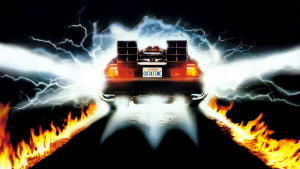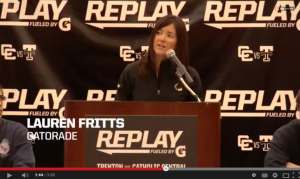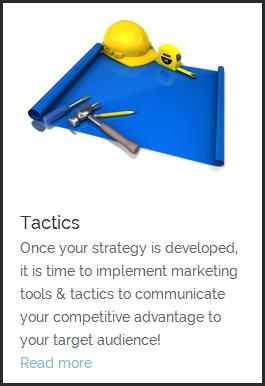 “If history were taught in the form of stories, it would never be forgotten.”
“If history were taught in the form of stories, it would never be forgotten.”
― Rudyard Kipling, The Collected Works
Stories are a major part of human life since the dawn of human existence. As soon as early humans developed the ability to speak and think symbolically, stories were told.
Stories from ancient times are only different from those of today in setting and content. What hasn’t changed is the storylines. From the first human stories hatched tens of thousands of years ago to the TV drama you watched the other night, these timeless storylines endure.
Why are these storylines so enduring? It’s because they speak to fundamental emotions that all humans understand and experience. The themes are those all people face. Using these classic plots in your story planning can help you create something truly effective and emotional for your audience.
The seven basic plots are:
- Conquering the Monster
- Rags to Riches
- The Quest
- Voyage and Return
- Tragedy
- Comedy
- Rebirth
Let’s consider each one and look at some examples to help you get ideas.
Conquering the Monster
Conquering the monster is a familiar story line if you’ve ever seen a horror or science fiction movie. It goes all the way back to the first known work of literature, the Epic of Gilgamesh from the ancient Sumerian civilization. In it, the hero Gilgamesh goes on a quest where he does battle with a number of monsters. The storyline is also the format used in many video games like “Super Mario Brothers.”
In a conquering the monster story, the hero goes on a journey that culminates in the defeat of a terrible monster. The odds are stacked against the lowly hero, but through strength, cunning and whatever other virtues and resources are at-hand, the hero finally overcomes the monster and kills it.
You’ve seen this storyline in the biblical David and Goliath story. It’s the plot of many classics of literature such as Beowulf. It’s the basic plot behind “Godzilla,” “The Terminator,” the Star Wars Trilogy, and the James Bond movies. It’s also one of the main themes in superhero comic books.
The key is that the “monster” doesn’t have to be an actual monster. It can be any type of problem or frustration that your audience faces. One great example in marketing is the Allstate “Mayhem” campaign. The character Mayhem is a metaphor for any type of disaster you could face, and you conquer this monster through insurance. Another good example is Nike’s “Just Do It” narrative, where athletes overcome the monster (fear of failure, lack of confidence) by “just doing it.”
Rags to Riches
The classic story of the American dream is an example of a rags-to-riches story. Imagine the story of a poor immigrant that finds his or herself washed up on the shores of America, only to pull themselves up by the bootstraps through their own cunning and hard work, to one day become the billionaire on the hill.
You can see this story in the lives of many early 20th century entrepreneurs like Nelson Rockefeller, or in authors such as J.K. Rowling. It appears in classic stories like “Cinderella” and Charles Dickens’ David Copperfield. Films like “Rocky” and “Aladdin” portray rags-to-riches stories, and it’s the story behind many of today’s reality TV shows.
Rags-to-riches stories can be used very effectively to tell brand stories, since most companies start out as shoe-string operations in someone’s basement. A good example is the story of the app WhatsApp, which was developed by Ukrainian-born Jan Koum while he was on food stamps and sold five years later to Mark Zuckerberg for $19 billion.
The Quest
With the quest, the main character and their entourage set out on a mission to discover some place, person or object. They face obstacles and hardships along the way, all of which they triumph over and then proceed on. This is an excellent storyline because it’s exciting and keeps people on the edge of their seats, waiting for the next obstacle. The audience travels along with the heroes, experiencing the discovery vicariously through them.
The Arthurian legend of Sir Galahad’s quest for the Holy Grail is a classic example of the quest. More modern examples include the Indiana Jones series, Lord of the Rings, the Harry Potter Series, “Finding Nemo” and one of the most famous quest stories, “The Wizard of Oz.” J.D. Salinger’s Catcher in the Rye is the story of an inner quest to find purpose and meaning.
The quest storyline could be used in your search to discover (create) a product that solves the problems and hardships that your audience faces.
Voyage and Return
From Homer to Luke Skywalker, human cultures abound with stories about a hero’s journey into a strange or dangerous world and final return home. This is a story anyone who has ever ventured away from home geographically, or ventured outside their comfort zone psychologically, can easily understand. It touches a real nerve with people and the eventual homecoming offers an emotional release. These stories are particularly popular with children, maybe because the whole world to them is a strange land full of obstacles.
A number of classics fit this mold like Homer’s Odyssey and Lewis Carrol’s Alice in Wonderland. Quite a number of fantasy and science fiction stories use this storyline. Modern voyage and return stories include “Back To The Future” and the miniseries “Lost.”
Voyage and return can be used in a variety of different contexts. For example, you may have made a discovery while traveling that inspired you to come home and develop a product. Product development can be a voyage and return story if it involves venturing outside of your comfort zone. This story can also be used to sell travel-related products.
Tragedy
Tragedy stories are the toughest to use in marketing. The reason is that they’re all based on some fatal character flaw, weakness or lapse in morals on the part of the main character, which gradually destroys them. Tragedies, like Shakespeare’s Macbeth, feature an anti-hero who is haunted and tormented by their fatal flaw throughout the story, and they nearly always succumb to it in the end. For a tragedy, death is the happy ending. Not exactly marketing material.
Examples include “Bonnie and Clyde,” John Steinbeck’s Of Mice and Men, “Westside Story,” and “Titanic“.
Comedy
Although comedies are funny, not every funny story is a comedy. The term “comedy” is meant here in the Shakespearean sense. In a comedy, the plot revolves around some confusion among the characters, which leads to a wide variety of shenanigans and eventually resolves in the end when it’s cleared up and the characters are set straight.
Most sitcoms use this storyline for their episodes. This is because one mix-up offers an interesting plot and many opportunities for humor. Just take a look at any of your favorite comedies in either movies or T.V. series for an example.
Businesses can use the comedy format to reframe a problem into some type of comedic confusion. A business, for example, may have an IT mix-up which it has to untangle. In addition to following this story line, you can add comedic elements to any kind of story to make it more fun for the audience. Humor is a great emotion to trigger and it makes your story more memorable.
Take the story of Mr. W, which won energy company Epuron numerous awards for promoting wind energy. They took the abstract concept of wind, created a misunderstood person, and then revealed the truth of who he was right at the end. Not only did the story have a comedic element, but it was also an example of someone overcoming their own challenges and being ‘reborn’ – even though it wasn’t a real person!
Rebirth
Finally, the rebirth story is one that can be used very effectively in marketing. This is a story in which someone sinks to their lowest, most hopeless point, and then makes a miraculous recovery. The struggle of the main character offers a conflict to the story, and the protagonist overcoming the struggle and rising from the ashes is inspirational to the audience.
In A Christmas Carol, Scrooge threatens to stop Christmas, but the holiday is saved in the end. There’s an element of rebirth in nearly every episode of “Doctor Who” or a James Bond movie where the hero is about to be killed by the villain but narrowly escapes. “Beauty and the Beast” and “Sleeping Beauty” are both rebirth stories.
There are a great number of rebirth story ideas in a business context. Your product could save people right at the moment when they’re at the very bottom. This plot can also be worked into a customer testimonial. Your brand story could be about your business facing hardship and near bankruptcy until a great idea saves the day. Any personal story about overcoming a hardship or dark time is a rebirth story.
The rebirth story you tell doesn’t even have to do with your company, but can focus just on your own customers. A great example is Gatorade’s Replay series, which told the story of two ice hockey teams who took to the ice 11 years after a game which had involved a near fatal accident for one player. The story isn’t about Gatorade at all. Instead, Gatorade sponsors the game and you only see their products very peripherally in the footage.

As you’ve undoubtedly noticed from the above examples, an individual story can have a number of these storylines within it. A hero may go on a journey to conquer a monster, only to face a serious and near-fatal struggle from which he/she experience a rebirth, and then return home at the end. You don’t have to restrict yourself to only one storyline. Most great stories combine elements of a few.
Activity:
- From the different classic story formats, which would resonate most with your brand? Start jotting down some ideas for what would go into your story.








